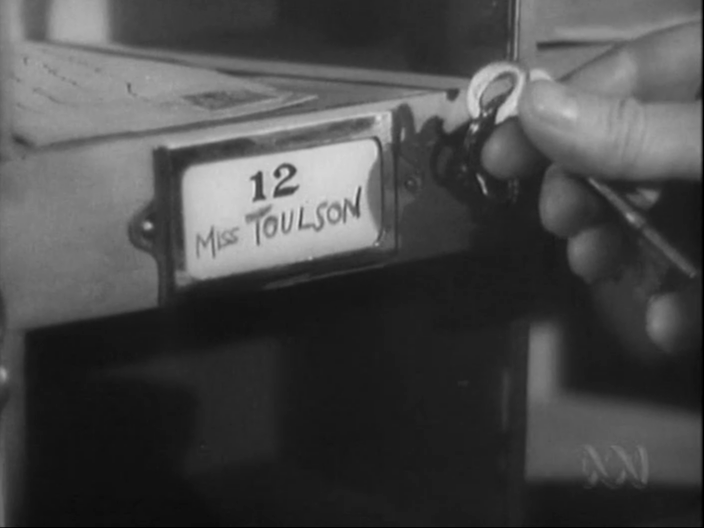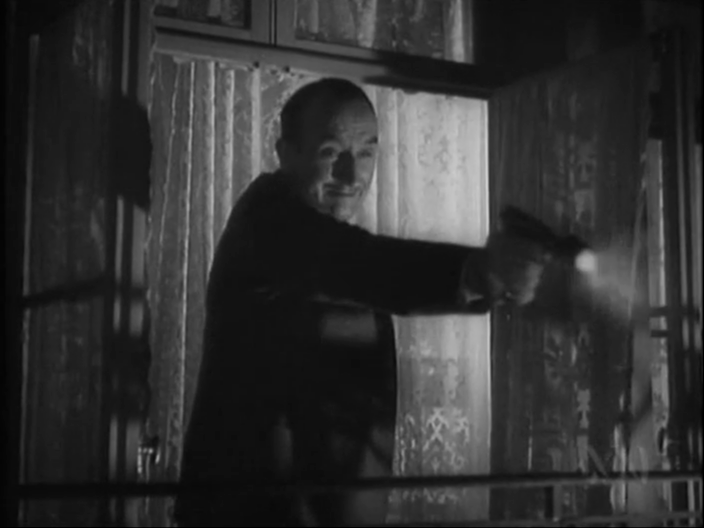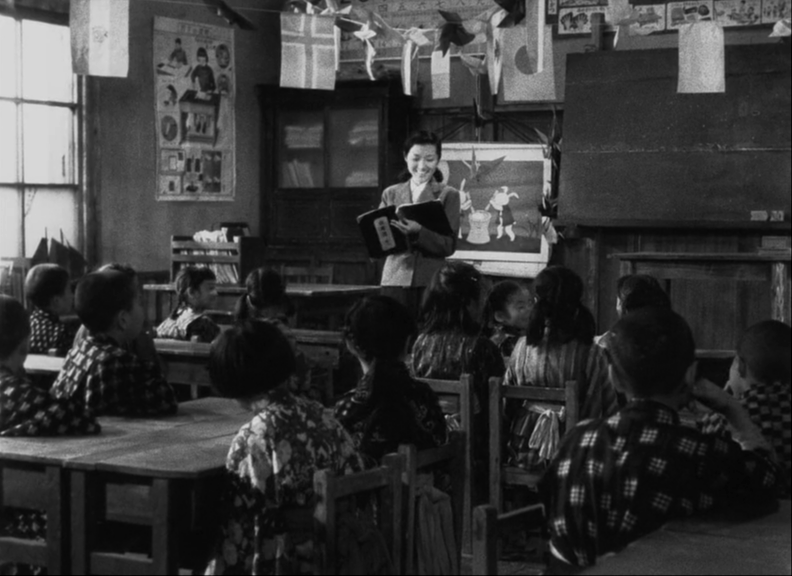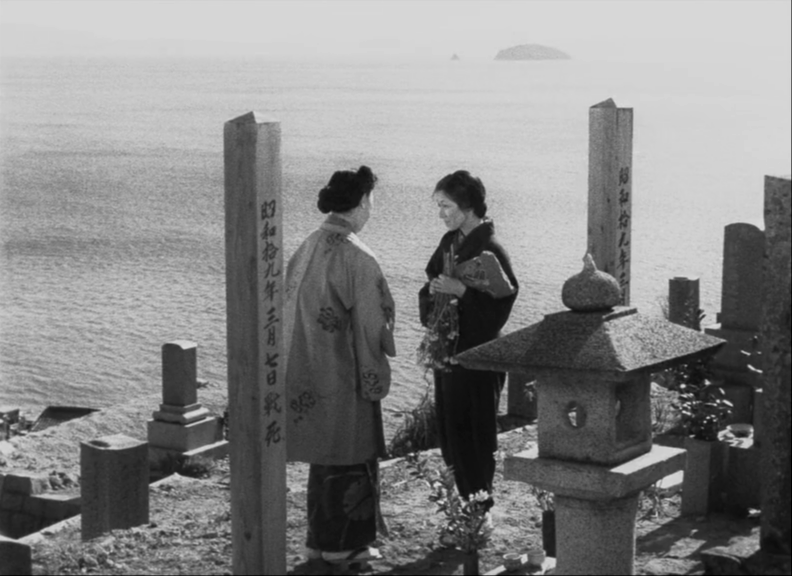
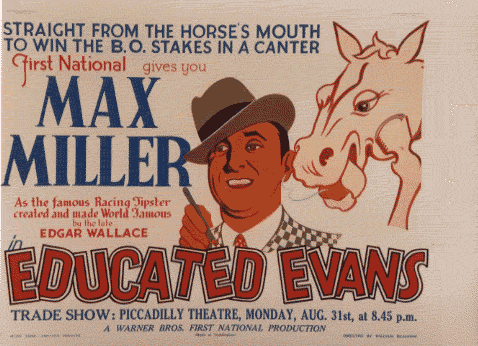
Max Miller was a legendarily popular music hall “cheeky chappie” whose appeal now seems irretrievable, alien, and who was never suited to film: his routines depend on jokes, patter and his evident rapport with the audience — smutty jokes aimed knowingly at working class mums in a style of harmless flirtation. Since film comedy isn’t about telling jokes and you can’t achieve exactly the same rapport with a movie camera (though some stars seem to manage a version of that). Nevertheless, Miller made a shit-ton of films, and shit seems to be the operative word here.
Roy William Neill, born at sea off the coast of Ireland started his career in the US and had a brief UK stint — he was at one point promised THE LADY VANISHES before Hitch got it, but hey Roy, you can have two Claude Hulberts and four Max Millers in consolation. Don’t take it to heart.

A lot of ABC films seem to be about going to Scotland — Will Hay and Old Mother Riley do it in order to be haunted. Max does it here in order to die a death on stage. Scottish music hall audiences were notoriously tough, with one known case of a comedian killing himself in Glasgow after a particularly bruising gig. Our hero comes on extremely obnoxious, constantly belittling his assistant, Chips, and feuding with a Scots comedienne, played by English Florence Desmond who was George Formby’s best leading lady (in NO LIMIT) with one of the ghastliest fake accents I ever heard. Still, you take her part against Max.


“Max Miller is the worst comedian I’ve even seen,” remarked Fiona. Yet he’s clearly skilled, the speed of his chatter is breathtaking, hard to keep up with. But he’s of another world. The references are obscure, the smut abstracted, the whole way of being alien to us. And there’s an undeniable nails-down-a-blackboard to the rapid-fire barrage of insinuating smarm. Who wears a suit made out of curtains? I think it’s also a mistake to portray Max as an egomaniacal bully offstage, since a lot of his appeal onstage seems to be his naughty-but-nice Jewish boy image.
Desmond’s act is almost as abstruse, with impersonations of Cicely Courtnidge (Mrs Jack Hulbert) and Elizabeth Bergner (!)

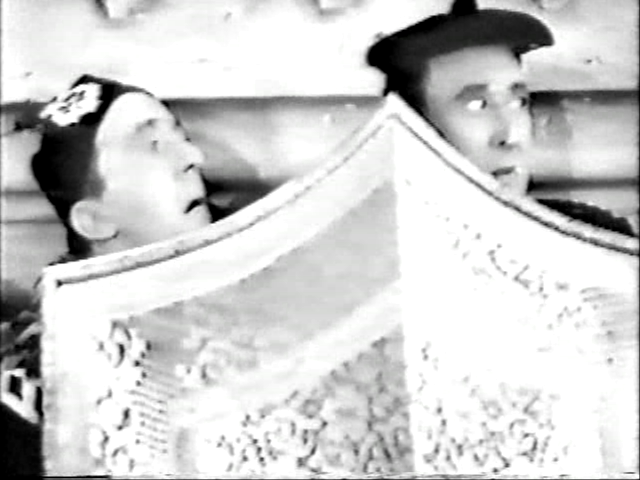

Neill’s strong, atmospheric visual style, as showcased in his later Sherlock Homes movies with Rathbone and Bruce, is nowhere to be seen, though it would hardly have fitted this material. But he doesn’t come up with an alternative — though surely a better copy would reveal vastly more visual quality. I wonder if any of the other Neill-Miller collaborations are haunted house films? It seems like every ABC worth his salt ‘n’ sauce had to wind up in a spookshow at some point. Askey and Hay did it every other film.
Unforgivably, neither Alastair Sim nor John Laurie appears during the Scottish scenes, but there’s a talented kid in a major role, authentically Scottish and working-class. Uncredited, of course. Otherwise, it seems to be a point of honour to employ no actual Scots.
As unsuited as Max is to film stardom, this film is a far worse vehicle than even he deserves. I seem to recall FRIDAY THE 13TH being better — not a movie in which Awful British Comedians are slaughtered by a maniac with a hunting knife, alas, but an ensemble piece where Max shares the limelight with Jessie Matthews, Ralph Richardson (!) etc.
VERDICT — Max Miller is awful, but to appreciate his gifts you probably had to see him on the stage, and be born in the south of England before 1900.





